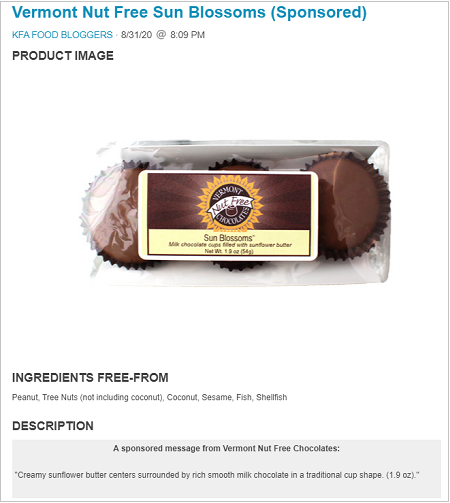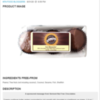The Food and Drug Administration (FDA) recently published findings about the milk content of dark chocolate bars and chips made in the United States that were labeled “dairy free” or had similar free-from-milk claims. The study found that four of the 52 products tested had enough milk to possibly cause an allergic reaction.
"Milk is the most common undeclared food allergen, responsible for more than a third of all food product recalls caused by undeclared allergens in the U.S. in the past decade. Milk also has been observed to be the leading cause of consumer adverse reactions to foods recalled because of undeclared allergens, and these foods included dark chocolate products."
Many chocolate products are recalled in the United States because of undeclared allergens. The most common undeclared allergens found in chocolate are milk and peanut.
Read the Label
Read every label every time. It's a great time to review how to read food labels to prevent allergic reactions. The FDA doesn’t regulate “made in a facility with” or “may contain” statements. If you still have questions after reading the label, you may wish to contact the manufacturer and ask about how the product is made. You can ask whether the product is made on equipment dedicated to making dairy-free dark chocolate, whether the ingredients used are free of milk, and whether the manufacturer(s) test their products with dairy-free claims for the presence of milk.
The FDA does not define the terms “dairy free” or “milk free.” These claims are voluntary statements that should indicate that there is no milk or milk component in a product. If a product has a dairy-free or similar claim, the FDA would expect there to be no milk allergen in the product given that consumers with milk allergy depend on the accuracy of dairy-free claims. Note that the term "non-dairy" is a defined terms and allows a product to contain caseinate, a milk protein.
Milk-Free Chocolate Treats
If you have a milk allergy, there are still ways to enjoy chocolate!
Shop for Chocolate Using Allergy-Friendly Guides
KFA publishes allergy-friendly candy guides each year for Easter and Halloween. The lists include many candies you can buy year-round.
You can also search KFA’s Allergy-Friendly Foods collection. You can find a variety of chocolate candies, bars and chips from allergy-friendly food vendors. The list allows you to search by category, allergens and more.
Mold Your Own Chocolate Candies
Let your creativity shine by creating fun, safe chocolates at home using candy molds using milk-free chocolate chips or bars. Here are some recipes and guides to walk you through the process:
- Allergy-Friendly Chocolate Easter Eggs Candy – Create basic molded chocolates in any shape with this chocolate candy guide.
- Allergy-Friendly Chocolate Easter Bunnies – Use this guide any time of the year to create hollow chocolates with two-part molds. It also explains techniques like tempering.
- Crunch Chocolates – Use crispy cereal to create crunchy shaped chocolate treats.
Safe Eats® Allergy-Friendly Recipe Collection
If you’re looking for fun recipes beyond basic chocolate candy, check out the recipes in KFA’s Safe Eats® Allergy-Friendly Recipe Collection. It includes more than 1,500 recipes from our community members, including several allergy-friendly chocolate recipes. Search by category and allergens to find recipes to make at home.
- Chocolate Chip Cookie Dough Truffles
- Chocolate Dainties
- Chocolate Sunbutter Bark
- Easy Chocolate Cherries
- Mock Peanut Butter Cup Bars
- Peanut-Free, Milk-Free Chocolate Buckeye Candy
- Vegan Toffee with Candied Hemp Hearts
- Xavier's Chocolate Mint Bark





Comments (2)